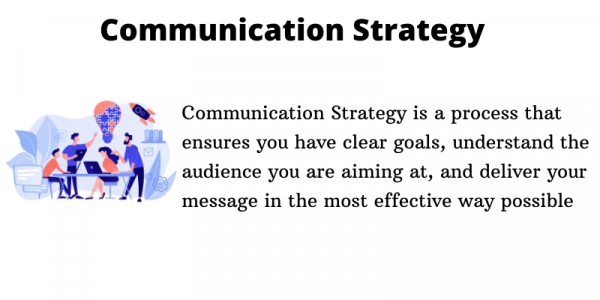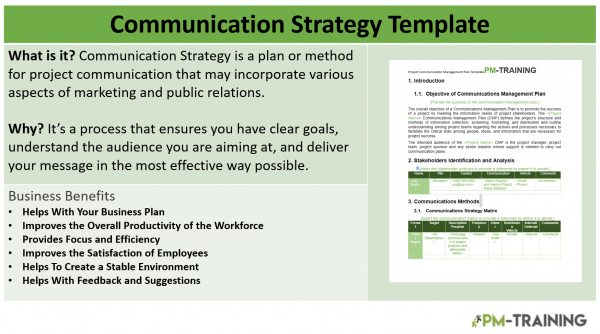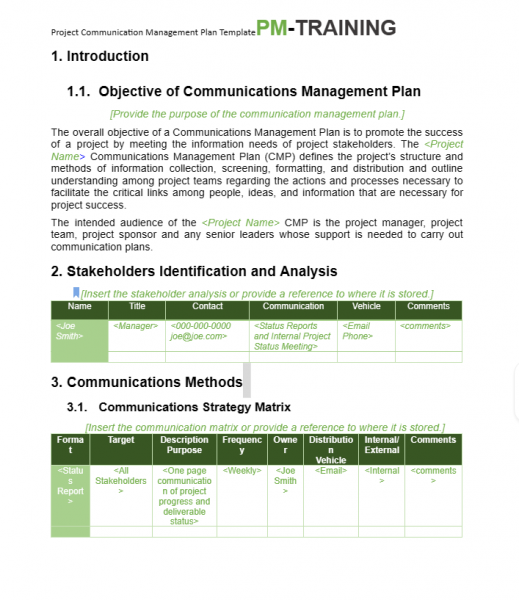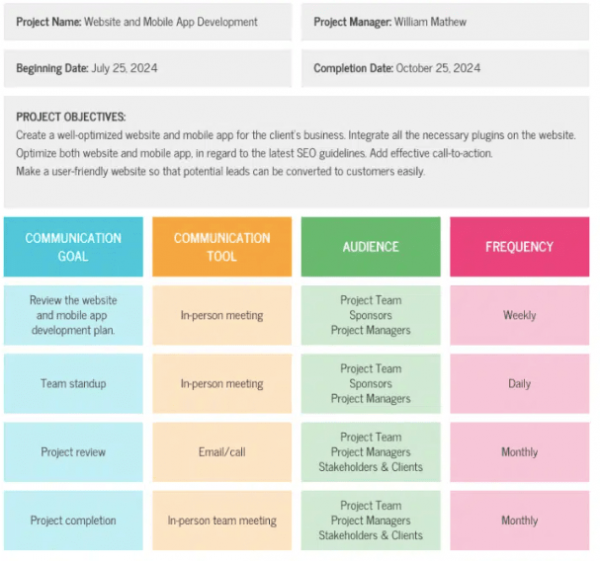Communication Strategy is a plan or method for project communication that may incorporate various aspects of marketing and public relations. It’s a process that ensures you have clear goals, understand the audience you are aiming at, and deliver your message in the most effective way possible.
Communication strategy is about creating a consistent image for your brand both internally, with colleagues or employees, and through external communication with customers, clients, stakeholders, and other groups.
It is a method of planning that determines how information is distributed through various channels to achieve goals when marketing a product or service.
In the face of a rapidly changing social media landscape and a sea of options such as voicemails, emails, texts, and Whatsapp messages, you can never be too assertive with your communication technique. Your strategy should be tactical. Tactics can be as simple as sending one email to all your customers, engaging via social media, or mass mailing.

Importance of Communication Strategy
Helps With Your Business Plan
A good strategy can be used to improve marketing, branding, and PR efforts by guiding the use of different approaches and techniques. A good strategy will outline who you want to reach, how to reach them, and what content or information they will receive.
Improves the Overall Productivity of the Workforce
A good strategy provides a consistent set of objectives and visions while eliminating misunderstandings that can stall projects.
Provides Focus and Efficiency
Every business needs a communication technique, especially those growing rapidly or trying to tackle new markets. A well-written strategy can help companies to identify the right stakeholders and align their efforts at critical points in the project.
Improves the Satisfaction of Employees
A well-written strategy can help employees who are important for organizational success. With a good strategy, they will receive all communications from the company and will not feel sidelined.
Helps To Create a Stable Environment
Creating and reviewing a communication technique provides companies with a good understanding of how people work and how they communicate. It gives them an opportunity to examine tasks they currently perform and develop new ones based on the best practices in this field.
Helps With Feedback and Suggestions
A good strategy should be able to accommodate feedback and suggestions, either from internal or external sources.
Types of Communication Techniques
Verbal Communication
Verbal communication involves the actual words that you communicate to people. The most effective verbal communication strategies work in hard-to-reach the audience. Verbal communication is extremely effective as it can sometimes lead to osmotic communication.
Non-Verbal Communication
Non-verbal communication strategies are just as important as verbal ones. They include body language, facial expressions, and vocal tone.
Visual Communication Strategies
Visual communication strategies are the ones that most of us use on a daily basis in our personal lives. It includes things like email graphics, business cards, or logos.
Written Communication
Written communication strategies include things like press releases, company brochures, and advertisements. These are often used when companies want to influence a large number of people. The key is to make the written strategy as precise as possible
Listening
A lot of communication strategies are half-empty as they aren’t based on listening to the people who receive the messages. Listening is a very powerful tool that helps companies understand what the public wants and tailor their messages to suit them

How To Create a Communication Strategy?
Communication strategy sets direction so that all communication activities, products, and materials work in harmony to achieve the desired change. Follow these steps to create an effective communication strategy
Understand the Market
One of the best ways to create your communication technique is by gathering information about the market. You can do this by looking at different sites that provide market analysis.
Research the Competition
Once you have a good idea about the market, it’s time to research your competition. You need to know who they are, where they are in the market, their strengths and weaknesses, and how well your business fits into these arenas.
Formulate Your Message
Your message should be simple and clear. It makes you trustworthy and gives your customers a reason to do business with you.
Choose Your Channel
The channel you choose to use in your communication is just as important as the message itself. Depending on the industry, it may be a mix of different channels, including social media, TV, newspapers, or even radio.
Listen
This is one of the most important steps in creating a good communication technique. You need to make sure that you listen to your employees and clients and get a good idea of the changes you need to make.
Communication Strategy Template Google Docs
Communication strategy templates are like a blueprint for your communication process. They help you organize and prioritize everything you have to do to reach the people who can benefit from your messages. The following is an example of a good template and what it should prioritize.
Audience – The purpose of your communication strategy should be to meet the needs of your customers and employees. You need to know who will benefit from it and how you will get their attention.
Message– Your message should align with the needs of your audience. It should be clear, quantifiable, positive, and specific.
Channel– You will need to decide on the channel you will use in order to reach your audience. It is important to keep in mind that the right channel will not just give you access to a large number of people, but it will also help you to reduce costs, expand your reach, and improve efficiency.
Frequency- You will need to decide how often you can expect to send messages. It is important that you do not flood people with messages but rather focus on sending out a few relevant ones.
Timing– You will need to know when to release the message. Timing will vary depending on the channel you use and the audience.
Responsibility– Make sure that it is clear who will do the actual work. You need to standardize who gets access to the message and what they have to do with it.
Feedback Mechanism– The final point on the template should be a mechanism to get feedback, which will allow you to make adjustments to your messages based on what is needed.
Tips and Best practices
- Keep It Simple – Your message should be clear and easy to understand. If you are using a visual element in your message, make sure that it is relevant and is based on human psychology.
- Stick to the Facts– Any message that you send has to be based on fact. It should not contain opinions or anything that could be construed as potentially harmful.
- Be Positive– Your message should be positive and attract more people rather than repel them. Focus on the good things that you do, and try to show the positive side of your company and its products.
- Scarcity- You will benefit more if you can make people believe your offers have a timeline.
- Respect Your Audience- You have to respect your audience. It means that you should not try to manipulate them.


